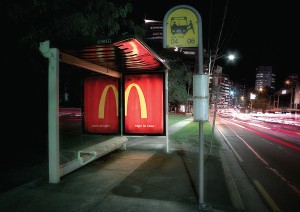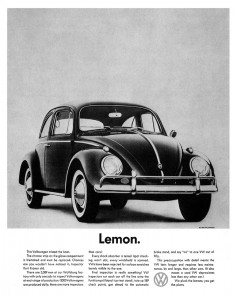Brands began to grow and become national and then international in the early part of the last century.
They then went through a growth spurt after the Second World War. This was especially evident during the Creative Revolution of the 1950s’ and 60s’.
Agencies like Ogilvy and Mather worked with their clients to expand into new areas by creating unique campaigns designed to tap into the different cultures.
Then, in order to reduce costs, marketers sanitized the advertising so it all looked the same and called it ‘Globalization’.
Now many of these brands are now suffering from Brand Decline, where their commercial and social viability is being questioned.
Communication has been revolutionised and the brand paradigm is being challenged. Social Media and online shopping are changing the way consumers consume. Even consumerism is being challenged, as a new generation find that they either can’t afford to purchase or don’t really want to.
In Australia the dream of owning a house on a quarter acre block is just not possible for many the current generation. The shift will be into high density living, much like 99% of the rest of the world.
This will have a knock on effect to many branded goods.
When you live in an apartment you don’t have a garden and don’t need half the products that Bunnings and other large hardware stores flog.
The demise of the Detroit motor industry came about because the marketers and manufacturers didn’t see the small four cylinder Japanese cars coming. That was until they knocked their big gas guzzlers off the motor show podiums.
The same thing has happened here as the Mazda 3 takes over as being Australia’s largest selling single vehicle. A position held by locally manufactured vehicles for over 100 years.
Long-standing branded goods are disappearing from supermarket shelves at an alarming rate. Fueled by a desire to give the consumer lower prices and make larger profits, the supermarkets are filling the shelves with Home Brand goods.
The brands that survive won’t do so by cutting prices or engaging in a retail war with their competitors. They will only continue if they remain relevant to the consumer.
Loma Linda in California, a town with the world’s best life expectancy, has no bottle shop and no McDonalds. Now this is an extreme situation but it’s not beyond possibility that it could be part of a growing trend.
If proposed new plain packaging laws pass the in the Australian parliament, cigarette brands as we know them, will be history.
Long standing brands like Marlboro, Dunhill and Peter Stuyvesant will lose their identity.
Lonely Planet grew out of a need to provide a new generation of travelers with information that was relevant to them.
Everywhere you traveled you could see the tourists clutching onto their Lonely Planet guide like Linus to his blanket.
Now many of them have replaced the guidebook for a notebook and especially an iPad.
Currently Lonely Planet has only 5 ebooks for the iPad.
I wonder if Maureen and Tony Wheeler saw that the writing was no longer on the wall or in fact, even on the book, when they sold out to the BBC in February last year?













